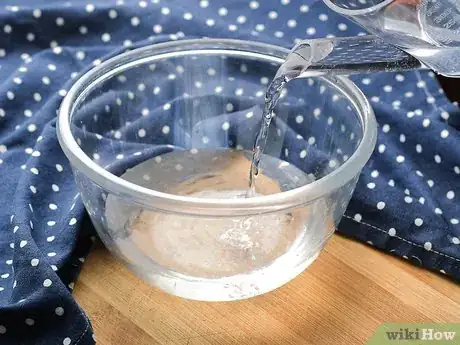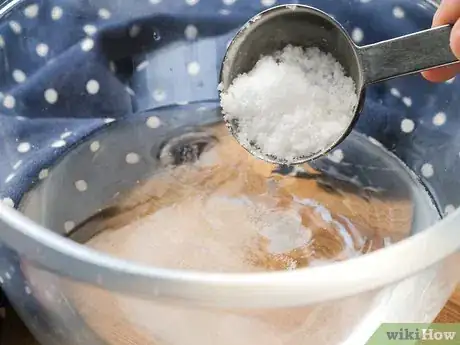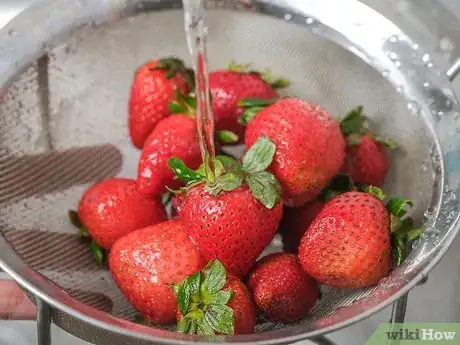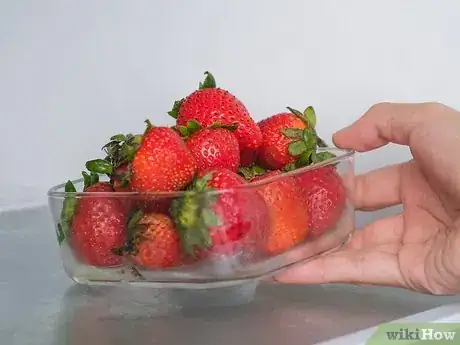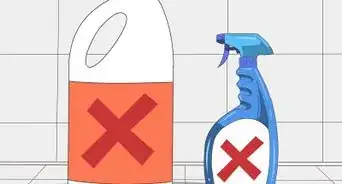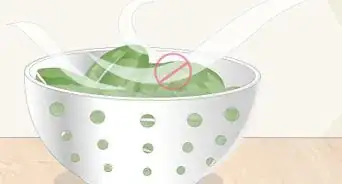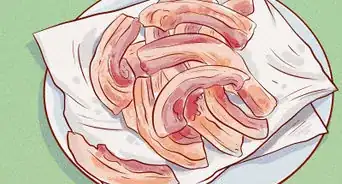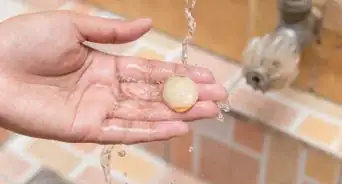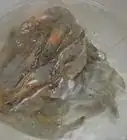This article was co-authored by wikiHow Staff. Our trained team of editors and researchers validate articles for accuracy and comprehensiveness. wikiHow's Content Management Team carefully monitors the work from our editorial staff to ensure that each article is backed by trusted research and meets our high quality standards.
There are 7 references cited in this article, which can be found at the bottom of the page.
This article has been viewed 13,245 times.
Learn more...
If you’ve been on TikTok recently, you may have heard of the experiment where people soak strawberries in saltwater to draw out small bugs. This seems gross, but it’s actually completely normal for all your fruits and vegetables to have some dirt and bugs on them—they come from the ground, after all! Doctors and food experts say that it's not dangerous to eat these bugs, so don't worry about your health.[1] However, if you’d still like to try a saltwater rinse to get bugs out of your strawberries, then it’s very easy to do at home.
Steps
Making a Salt Wash
-
1Wait until you’re ready to eat the strawberries to wash them. Moisture will encourage mold growth and make strawberries spoil more quickly. It’s best to avoid washing your strawberries until right before you want to eat them so they stay as fresh as possible.[2]
- In the meantime, store your strawberries in an open container in your refrigerator. An airtight container will trap moisture and make the strawberries go bad.[3]
-
2Fill a bowl with 2 cups (473 ml) of warm water. Any bowl will work, as long as it doesn’t leak. Measure out 2 cups (473 ml) of warm tap water and pour it into the bowl.[4]
- You could start off with cold water too, but the salt won’t dissolve as well. It’s best to start with warm water to dissolve as much salt as possible.
Advertisement -
3Stir 1 tbsp (17 g) of salt into the water. Scoop out the salt and pour it into the bowl. Then stir until the salt dissolves completely.[5]
- You could also use more water if you’re washing a lot of strawberries. Just keep the salt and water in the same proportion.
- The type of salt doesn’t matter, so plain iodized or non-iodized salt, sea salt, or any others will work fine.
- Some other recommendations call for more salt, but this should be enough.
-
4Let the water cool before washing the strawberries. If you started with hot water, let it cool down before you soak the strawberries. Wait for the water to reach about room temperature first so the strawberries don’t get damaged.[6]
- Experiments haven't proven whether warm or cold water works best to draw out bugs. Just as long as the water isn't hot, you should be fine.
Soaking the Strawberries
-
1Pick out any spoiled or moldy strawberries before soaking them. You shouldn’t eat any spoiled strawberries to avoid food poisoning. Before washing them, look at each strawberry for signs of mold or spoilage. Pick out bad ones and throw them out.[7]
- Some warning signs include large white areas, a dark color, very mushy or leaky texture, and a dry, discolored cap.
- Try to inspect the strawberries as much as possible before buying them so you don’t have to get rid of any.
-
2Soak the strawberries in the saltwater for 30 minutes. Gently put the strawberries into the bowl. Let them soak for 30 minutes to draw out any bugs and rinse off pesticides.[8]
- Make sure there’s enough water to cover the strawberries. If you have to, add more water and salt.
- Some other recipes recommend soaking the berries for only 5 minutes to prevent an overpowering salt taste. However, as long as you rinse the strawberries, they shouldn’t have too much of a salt flavor.
-
3Rinse the strawberries under plain water after soaking them. A salt soak could leave the strawberries with a salty flavor, so always rinse them off before eating them.[9] Put the strawberries into a colander and rinse them off under your faucet with cold water. Shake them around a bit to get rid of any dirt.[10]
- If your faucet gives off a lot of pressure, keep it turned low. Otherwise, you could break the fruit.
- Don’t use any soap or chemicals to wash the strawberries. This isn’t necessary, and you could ruin the taste of the fruit.
-
4Refrigerate any leftovers in an open container. While it’s better to store the fruit before you wash it, it’ll still last if you have leftovers. Pat the leftover strawberries with a paper towel to get rid of any moisture. Then put them in an open container so no moisture gets trapped inside. The strawberries should last 3-7 days in the refrigerator.[11]
- If you want the strawberries to last longer, you can also freeze them for 6-12 months.
Things You’ll Need
- Bowl
- Salt
- Warm water
- Strawberries
Warnings
- Even if you don’t use saltwater, it’s important to rinse your strawberries in clean water to remove pesticides.[13]⧼thumbs_response⧽
References
- ↑ https://www.usatoday.com/story/news/factcheck/2020/05/28/fact-check-yes-little-bugs-may-live-your-strawberries/5259670002/
- ↑ https://counties.agrilife.org/galveston/files/2012/03/Safe-Handling-of-Fresh-Strawberries-Publ.-E-204.pdf
- ↑ https://www.hgtv.com/outdoors/flowers-and-plants/fruit/how-to-store-fresh-strawberries
- ↑ https://food52.com/blog/25418-strawberries-salt-water-bugs-cleaning-hack
- ↑ https://food52.com/blog/25418-strawberries-salt-water-bugs-cleaning-hack
- ↑ https://youtu.be/CX-82ZBO9cc?t=28
- ↑ https://counties.agrilife.org/galveston/files/2012/03/Safe-Handling-of-Fresh-Strawberries-Publ.-E-204.pdf
- ↑ https://food52.com/blog/25418-strawberries-salt-water-bugs-cleaning-hack
- ↑ https://food52.com/blog/25418-strawberries-salt-water-bugs-cleaning-hack
- ↑ https://counties.agrilife.org/galveston/files/2012/03/Safe-Handling-of-Fresh-Strawberries-Publ.-E-204.pdf
- ↑ https://www.hgtv.com/outdoors/flowers-and-plants/fruit/how-to-store-fresh-strawberries
- ↑ https://www.cnn.com/2020/05/21/us/strawberries-salt-water-bugs-trnd/index.html
- ↑ https://www.greenmatters.com/p/washing-strawberries-salt-water

